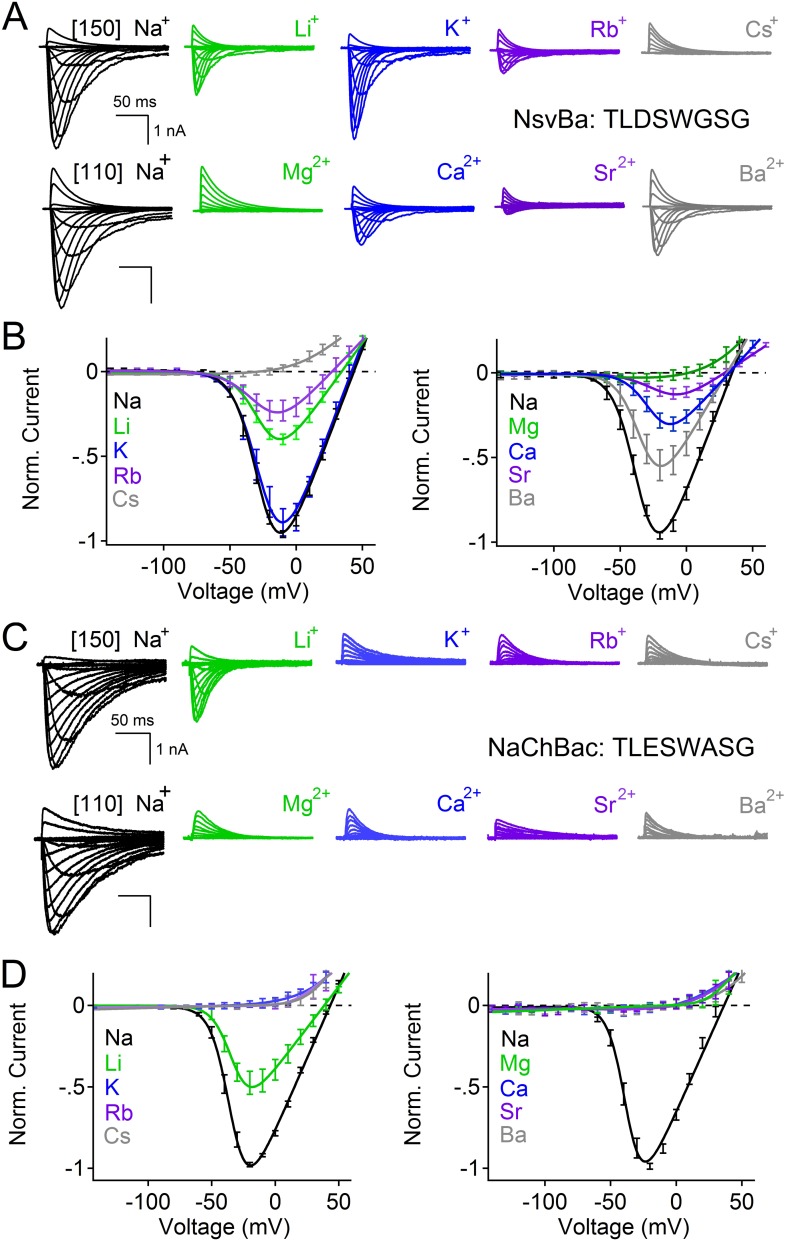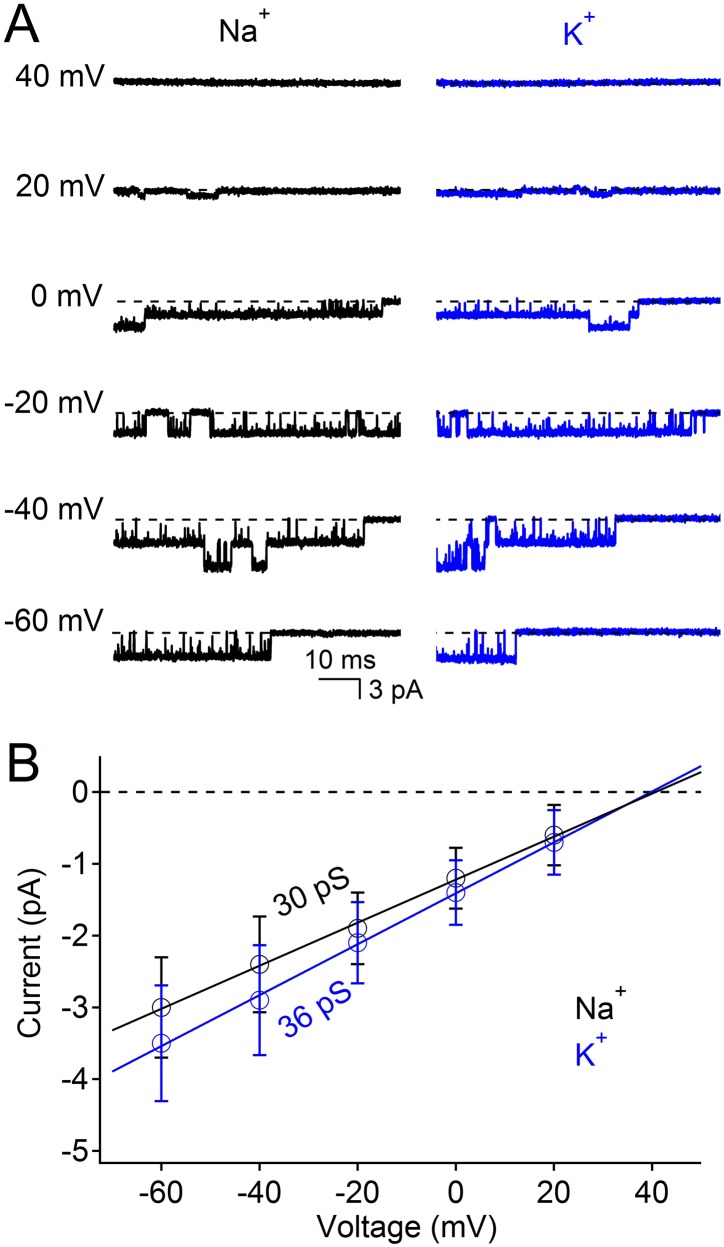Figure 2. Comparison of cation selectivity between the nonselective NsvBa and Na+-selective NaChBac channels.
(A and C) Representative current traces from NsvBa channel (A) or from the NaChBac channel (C) showing the first 0.25 s of 0.5 s activations from −180 mV holding potential: Top, 150 mM Na+ was substituted with an equal concentration of the indicated monovalent ions; Bottom, 110 mM Na+ was substituted for equal concentrations of the indicated divalent cations. (B and D) Resulting current-voltage relationships measured for the conditions tested in (A) and (C). NsvBa: n = 5–9, NaChBac: n = 6–9; Error = ±SEM.


